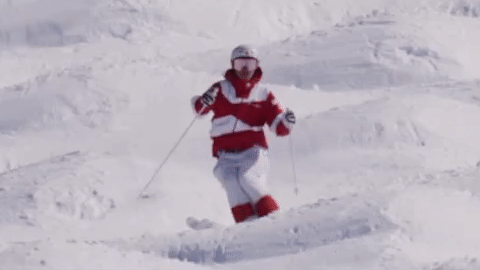
In Vivid Detail
Preparing for Olympic sledding sports
Nothing can compare to an actual run down the course, but luge, bobsleigh and skeleton athletes lean on mental visualizations as a means of practice ahead of race day.
Because of the high gravitational forces at play on the body as they tear down the track, sledders and lugers must limit physical practices for health reasons.
To fill in the gap, these athletes create and maintain a mental map of the track, allowing them to explore and strategize in their heads instead of in the sled.
It's basically a huge puzzle, the whole track, and each corner is a puzzle piece and you're trying to put it back together to see the greater picture.
— Mirela Rahneva, skeletonNo two tracks are the same. At the Alpensia Sliding Centre in South Korea, there are 16 turns over 1,376 metres at an average grade of 9.48 degrees.
Canadian athletes have raced the track at the Olympic test event this past World Cup season.
There's this one section where you come out of this left hander... Corner nine... Corner nine and that straightaway is gonna determine if you're on the podium or not.
— Justin Kripps, bobsleigh; Justin Snith and Tristan Walker, luge; Mirela Rahneva, skeleton; Melissa Lutholz, bobsleighCorner 9 exits into a chicane, a word derived from the French verb meaning 'to create difficulties.'
It appears to be a straightaway, but it’s actually a combination of slight corners 10 and 11.
There is a straight line through the path of least resistance, but few teams can avoid skidding from side to side.
As a brakeman it is my job to understand the curves and the pressure... because it's those moments where you don't have the pressure that if I'm moving, I can put us into a skid.
— Melissa Lutholz, bobsleighPressure is high around deeper corners of the track. Centrifugal force pushes out against the sled, sending it up and around the curve.
The pilots steer against this, enough to keep the sled on the ideal line without dropping off the wall and losing speed.
Around more shallow corners like 9 there is less pressure, making it harder to counter-steer.
Three teams at the World Cup test event shot the chicanes cleanly, two of which were in podium position after the first heat.
The other 22 teams skidded out and hit either corner 10 or 11 or both, reducing their speed.
Sometimes in visualizations you crash and you have to fully go through the scenario as to what you’re going to feel, what you’re going process, how you’re going to get back.
— Mirela Rahneva, skeletonMirela Rahneva imagines herself approaching corner 9.
She smoothly swings from one corner to the next, then hesitates.
That time I didn’t come around far enough so you need to toe tap to correct.
— Mirela Rahneva, skeletonShe’s about to hit the corner 10 wall, but drags her left foot to change her trajectory.
Athletes strengthen their real life race with each imagined run.

